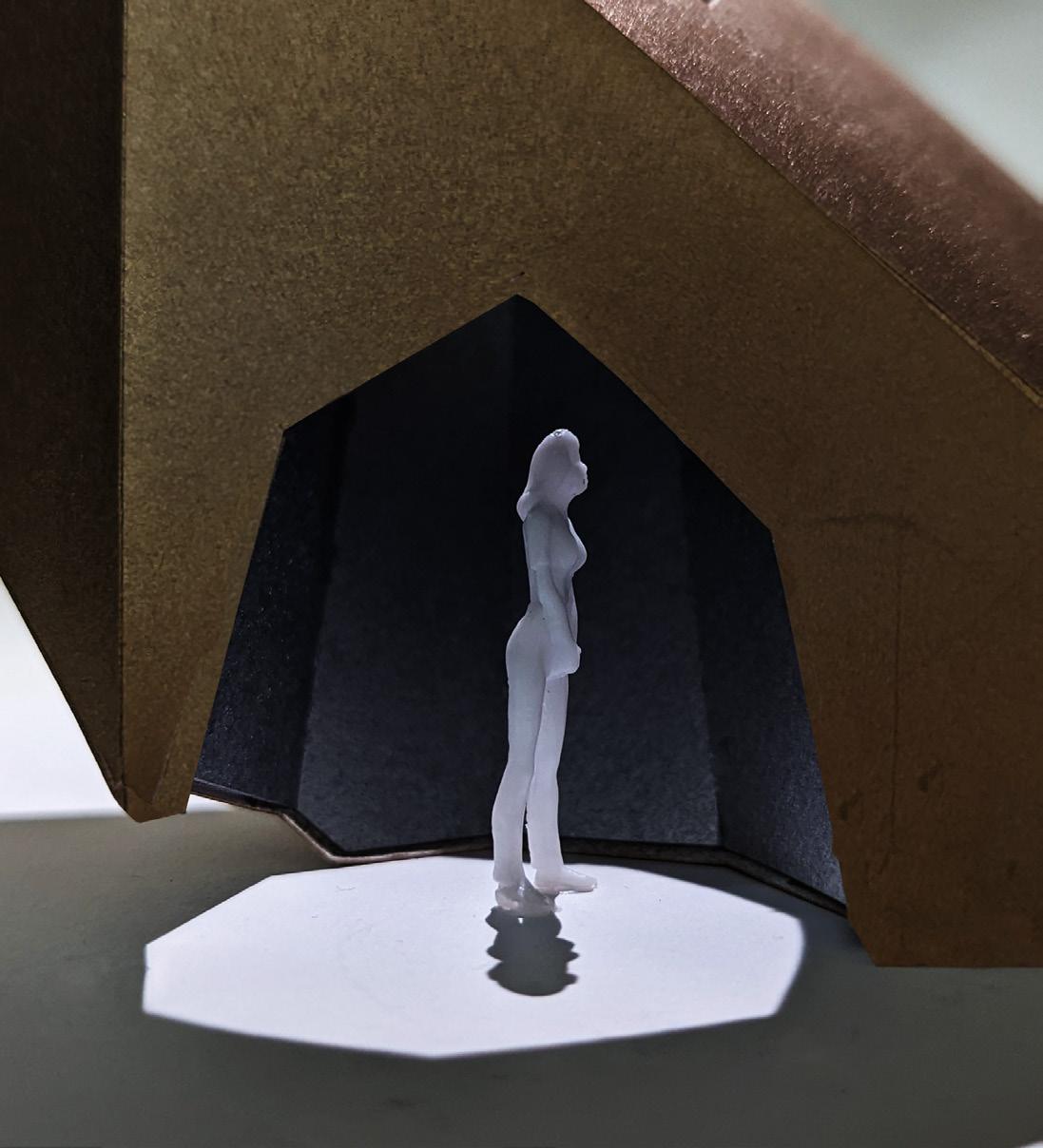
1 minute read
PROJECTIONS USED IN SUBTRACTION
MULTI-VIEW DRAWING AND SCALE
In a rather reversed way of designing, we established the scale of the resulting form after we finished designing it. Without a specific use in mind, we aimed to create moments where the form would hang over the user, as well as to partially surround them.
Advertisement
Unrolling Surfaces
Keeping in mind the scale that we want to have our form in, we begin to unroll it in order for us to laser cut and build our model. In order to get the right scale and to make the most efficient use of the material given to us, we unrolled our form into three separate pieces. We also added construction tabs, keeping in mind how the three pieces would fit together.
Final Model
After successfully laser cutting the pieces needed, we built the model. Once built and paired with our given scale figure, we were pleased to see that we scaled our form just right. One can explore the form through its sharp apex cantilevering above them, as well as entering the oculus created by the subtracted pyramid projection.
My partner decided to highlight contrast between form and void in our model by spray painting the oculus silver and the remaining surfaces gold, resulting in a playful shimmer when shown under a light source.
Strengths Weaknesses
- The communication of the design through drawings is thorough and clear.
- The relationship of the form to the human body is clear and interesting.
- A strong and interesting conversation between form and void in the final model.
- The model was slightly difficult to assemble due to the nature of it’s acute angles.
- This is the first project that simulates an (almost) entire design project from ideation to final model.
- The use of the laser cutter opens many possibilities in how to create a model.
- Risk of inefficient utilization of material when laser cutting.
- Free form ideation without revision puts final design at higher risk of being based in the designer’s inherent biases.
- Free form and playful ideation can have interesting and surprising outcomes.
Opportunities Risks
LEFT VIEW






